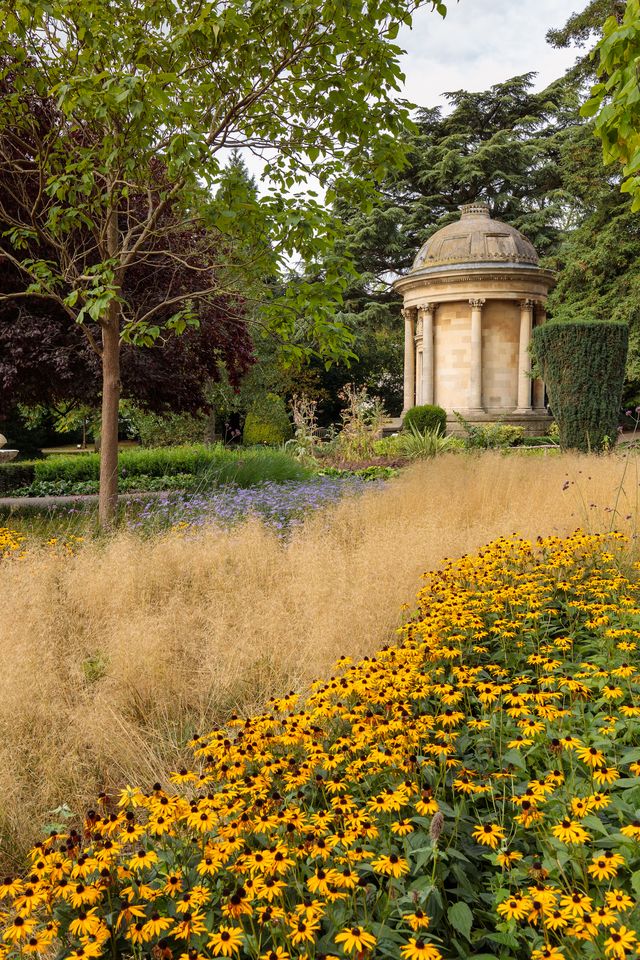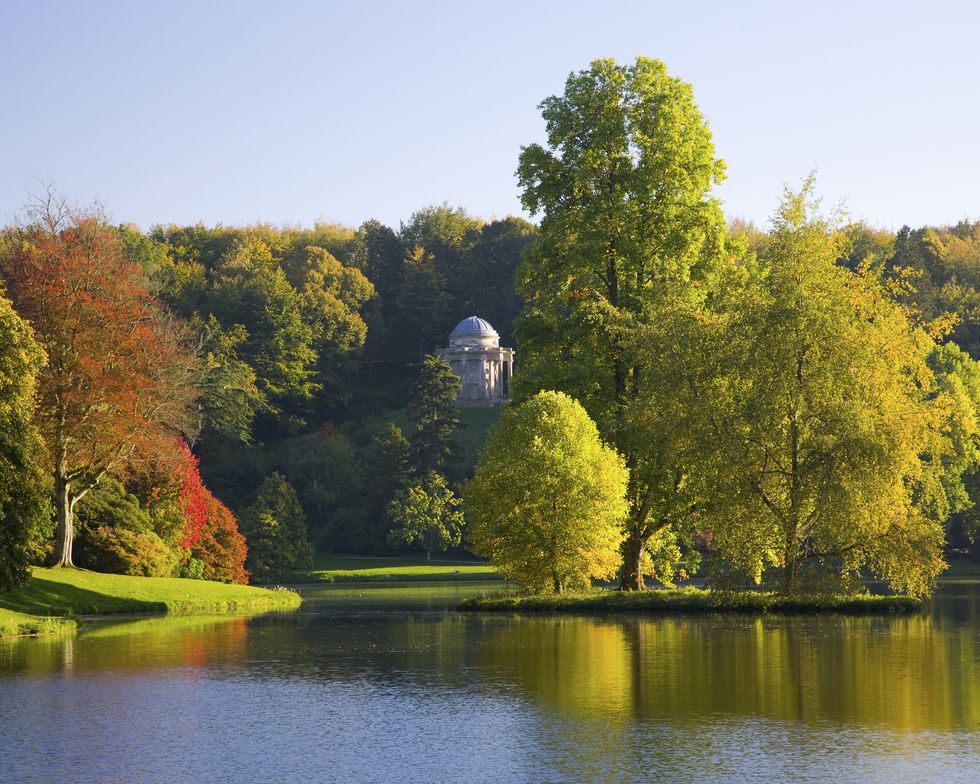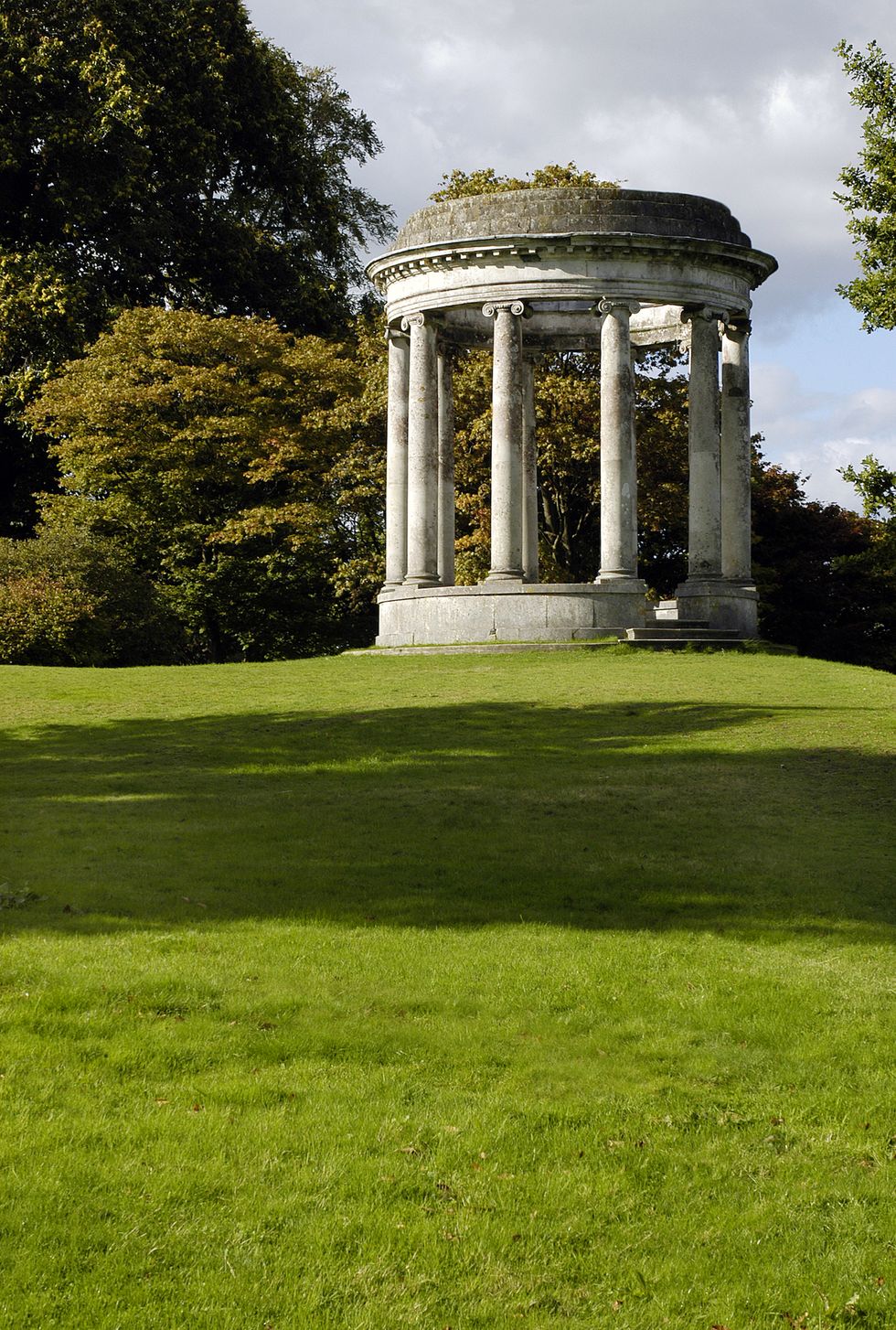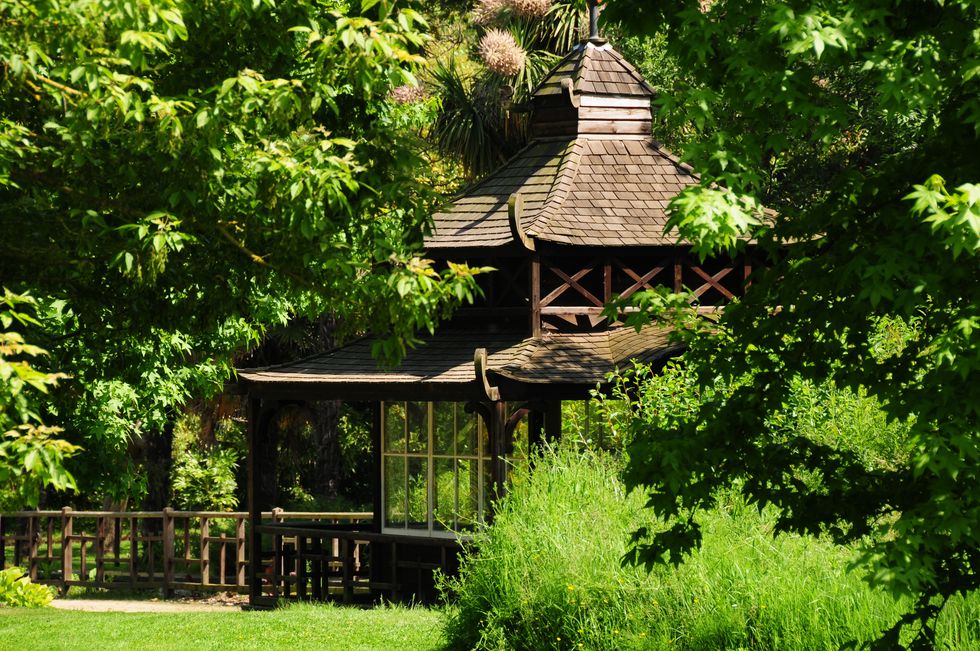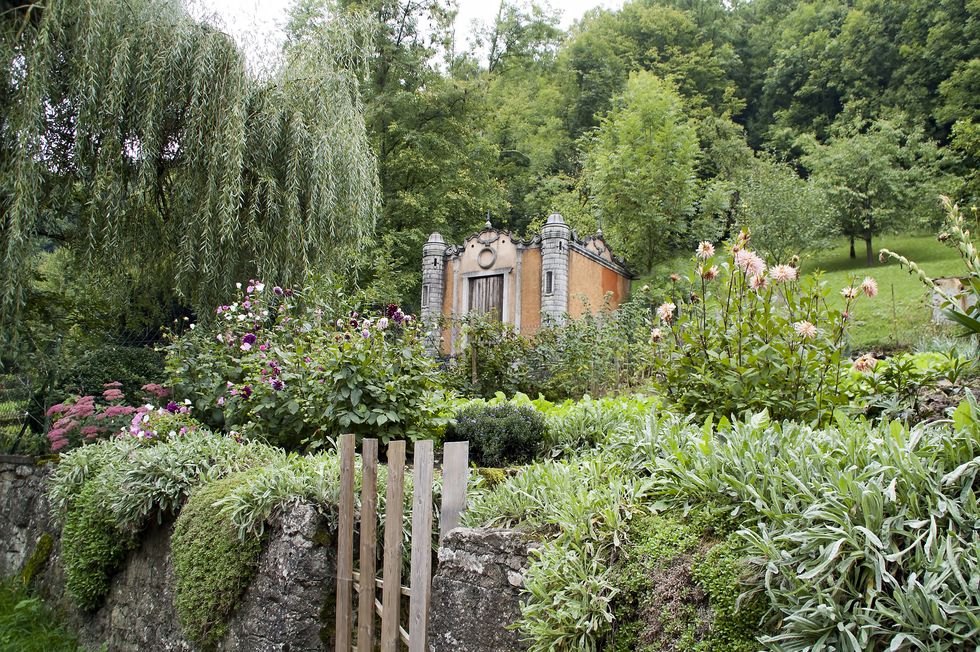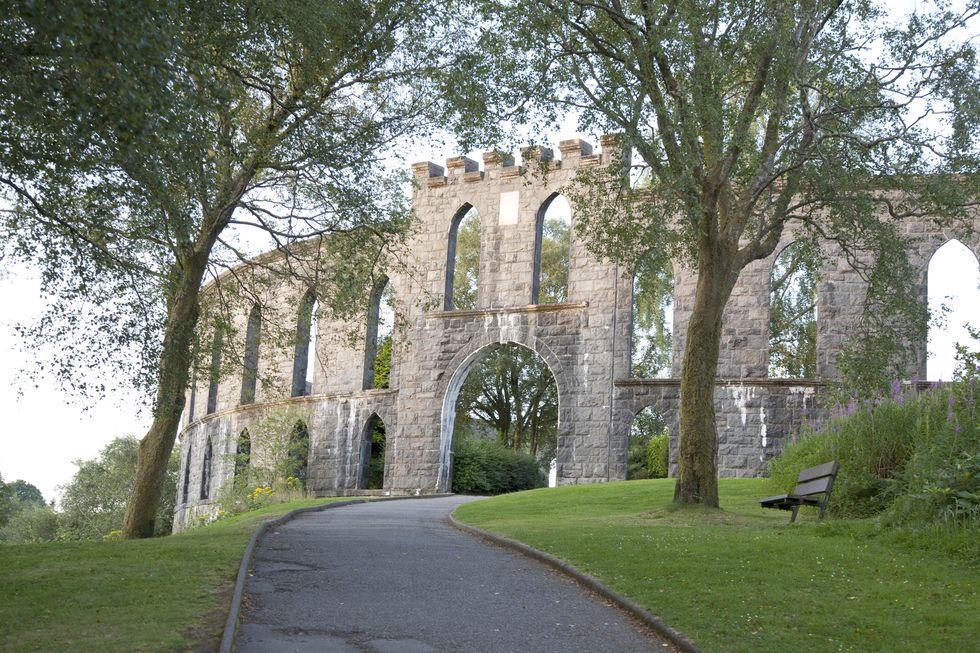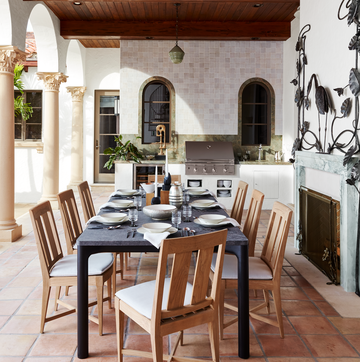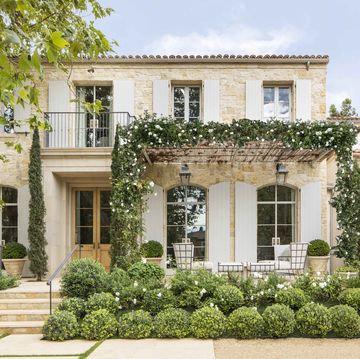Hidden on the grounds of the lavish estate of Stourhead, it stands out amongst the canopy of trees overlooking the bountiful rows of rhododendrons and water cascading into the ground’s quiet lake. There’s no clear trail leading to the vine-covered structure nor signs indicating its purpose.
That’s the magic of a garden folly like the Temple of Apollo at Stourhead: it's intended to act as a mere extravagant decoration. And yet over time, these eccentric structures have come to symbolize the romantic traditions of landscape architecture.
Typical of English and French landscape design, garden follies began popping up on the sprawling grounds of the most regal estates in the 18th century. The buildings, which inspired a revival of Gothic-style architecture and design, often served as nothing more than an eye-catching focal point for the gardens, showcasing a landowner's wealth with their intricate designs and imposing state.
Garden follies were even built as mini tributes to ideals and locales thought to be exotic at that time. It was not uncommon for these buildings to take the style of a marble Roman temple, a wooden Japanese pagoda, or even a colorful Turkish pavilion.
The Temple of Apollo, the circular folly designed by architect Henry Flitcroft in 1765, takes its inspiration from ancient Greece and acts as a subtle nod the sun god. Follies like this one served as the ultimate escape, transporting visitors to a garden outside of Kyoto or in the heart of Rome for a few moments via their global design influences.
The garden folly went in and out of vogue during the following centuries across Europe. Even as awe-striking as the structures were, their lack of practicality left many to fall to ruins. Once signs of wealth and status, they became memories of gardens' past. However, the legend or appeal of the garden folly as we know it today stems from the vivid scenes of splendor the ruins are still able to conjure.
Nestled on top of Battery Hill in idyllic Oban, McCaig's Tower has earned quite the reputation among locals of and visitors to the Scottish resort town. The quirky folly—closely resembling the Colosseum in Rome—was commissioned in 1885 by wealthy banker John McCaig. However, construction ceased after his death in 1902, leaving many people to ponder over what the socialite had planned for the looming structure.
Oddly, it seems fitting the unfinished towers stands today only as a palatial ornament on Oban's skyline. After all, the garden folly's greatest strength is its innate beauty and ability to make our minds wander.
Sarah DiMarco (she/her) is the associate editor at VERANDA, covering all things design, architecture, art, gardens, jewelry, travel, wine and spirits. She also manages social media for the brand.
